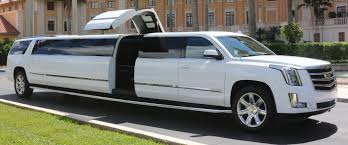Are you ready to explore the future of driving? The internet of vehicles (IoV) is paving the way for safer, more efficient, and more enjoyable transportation.
With IoV, vehicles can communicate with each other and the infrastructure around them, creating a seamless and interconnected driving experience.
IoV has numerous benefits, including increased safety through real-time communication between vehicles and the ability to reduce traffic congestion. Additionally, IoV can lead to more efficient driving by providing real-time data on traffic patterns and road conditions, allowing drivers to optimize their routes.
And with the integration of smart technology, driving can become more enjoyable and less stressful. But there are also challenges to overcome, including issues with cybersecurity and the need for consistent standards across the industry.
So, let’s dive in and explore the exciting possibilities of IoV.
What is the Internet of Vehicles (IoV)?
You’ll be fascinated to learn that the Internet of Vehicles (IoV) is the interconnected network of vehicles, infrastructure, and people, enabling seamless communication and data exchange for enhanced safety, efficiency, and convenience on the road. This technology is revolutionizing the way we drive and interact with our vehicles.
The IoV allows for real-time communication between vehicles, traffic lights, and other road infrastructure, which can help to reduce traffic congestion, prevent accidents, and improve the overall driving experience.
The IoV is made possible through the use of various technologies, including sensors, cameras, GPS, and wireless communication. These technologies work together to create a network of connected vehicles that can communicate with each other and with the surrounding environment. This allows for the exchange of information about traffic patterns, road conditions, and even weather conditions, which can help drivers to make informed decisions about their driving and route choices.
With the IoV, the future of driving looks bright, and we can expect to see continued advancements in this technology in the years to come.
Benefits of IoV: Safer, More Efficient, and More Enjoyable Driving
You’re going to love how much easier, smoother, and stress-free your daily commute becomes with IoV technology.
With real-time data sharing between vehicles and infrastructure, IoV can reduce traffic congestion and accidents. It can also improve fuel efficiency and reduce emissions by optimizing routes and reducing idling time.
Moreover, IoV can enhance the driving experience by providing personalized entertainment and information services. Drivers can access music, news, and social media, hands-free and without distraction. Passengers can also enjoy a more comfortable ride, with climate control and seat adjustments that respond to their preferences.
Overall, IoV is set to revolutionize the way we drive and travel, making it safer, more efficient, and more enjoyable.
Challenges to Overcome for IoV Implementation
Implementing IoV technology is no easy feat, as there are numerous obstacles that must be overcome to make our roads safer and more efficient. One of the biggest challenges is ensuring that all vehicles on the road are equipped with the necessary technology to communicate with each other and with the infrastructure. This requires a massive investment in infrastructure, as well as a concerted effort to incentivize drivers to upgrade their vehicles to be IoV-compatible.
Another major challenge is ensuring the security and privacy of the data being transmitted between vehicles and infrastructure. With the increasing amount of data being generated and transmitted, there’s a risk that this information could be intercepted or hacked, potentially leading to serious safety and security issues. As such, it’s crucial that robust security protocols and privacy measures are put in place to protect against these risks.
Ultimately, overcoming these challenges will require collaboration between governments, car manufacturers, and other stakeholders to ensure that the benefits of IoV can be realized without compromising safety or privacy.
Connected and Intelligent Vehicles: Impact on Traffic Management and Vehicle Maintenance
Connected and intelligent cars are transforming traffic management and maintenance, leading to more efficient and proactive approaches to road safety and vehicle upkeep.
With the advent of the Internet of Vehicles (IoV), vehicles can now communicate with each other and with the road infrastructure to make driving safer and more efficient. For instance, IoV-enabled cars can detect traffic congestion and suggest alternative routes to the driver, thereby reducing the time spent on the road and minimizing fuel consumption.
Moreover, connected cars can notify drivers of potential hazards on the road, such as construction zones, accidents, or weather conditions, allowing them to take necessary precautions. This can significantly improve road safety, as drivers are better equipped to avoid accidents and navigate through challenging road conditions.
Additionally, connected vehicles can send diagnostic data to the manufacturer or dealer, enabling proactive maintenance and repair, which can prevent breakdowns and reduce the cost of repairs.
All in all, the impact of connected and intelligent vehicles on traffic management and vehicle maintenance is profound and promises to revolutionize the way we drive.
The Future of Transportation: IoV’s Role in Driving Innovation
With advancements in technology, you’ll soon see cars communicating with each other and the road infrastructure to create a safer and more efficient driving experience. This is the future of transportation, where the Internet of Vehicles (IoV) plays a significant role in driving innovation.
IoV technology will enable vehicles to communicate with each other and the surrounding infrastructure, creating a connected network of vehicles that can optimize traffic flow, reduce congestion, and enhance safety.
IoV will also lead to the development of self-driving cars, which will revolutionize the transportation industry by eliminating the need for human drivers. This technology will provide greater mobility for all, including those with disabilities or who are unable to drive.
With self-driving cars, you’ll be able to sit back, relax, and enjoy the ride while the technology takes care of the driving. The future of transportation is exciting, and IoV is leading the way towards a safer, more efficient, and sustainable future.
Conclusion
Congratulations! Now you know all about the Internet of Vehicles (IoV) and how it’s revolutionizing the way we drive.
IoV promises to make driving safer, more efficient, and more enjoyable for everyone. Vehicles can communicate with each other and with the infrastructure around them, allowing for real-time updates on traffic, weather, and other important information.
However, there are still some challenges that need to be overcome before IoV can become a reality. These include issues with data privacy and security, as well as the need for more robust infrastructure to support the technology.
Nevertheless, the future of transportation looks bright, and IoV is sure to play a major role in driving innovation and progress in the years to come. So, buckle up and get ready for a thrilling ride into the future of driving!









